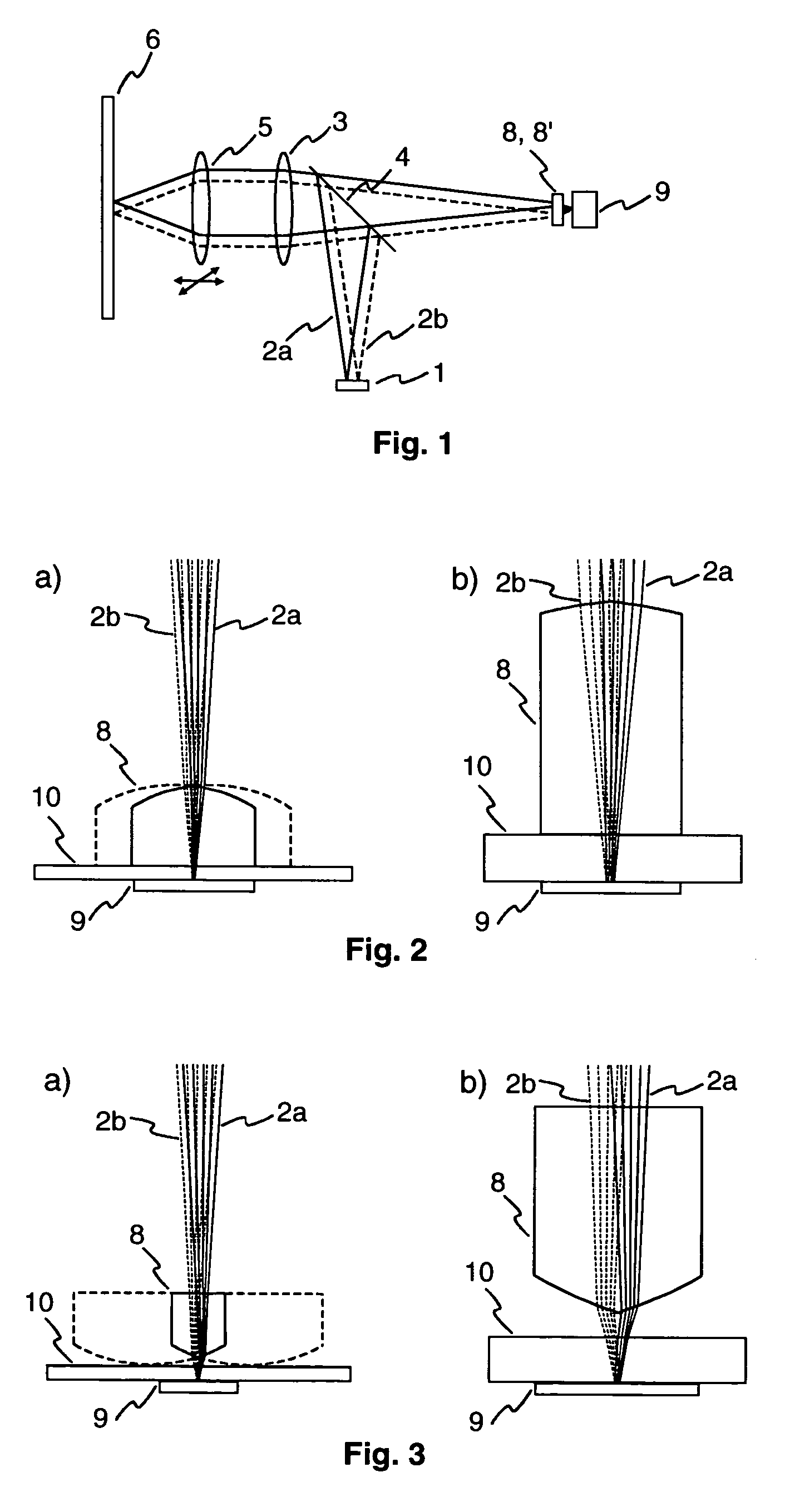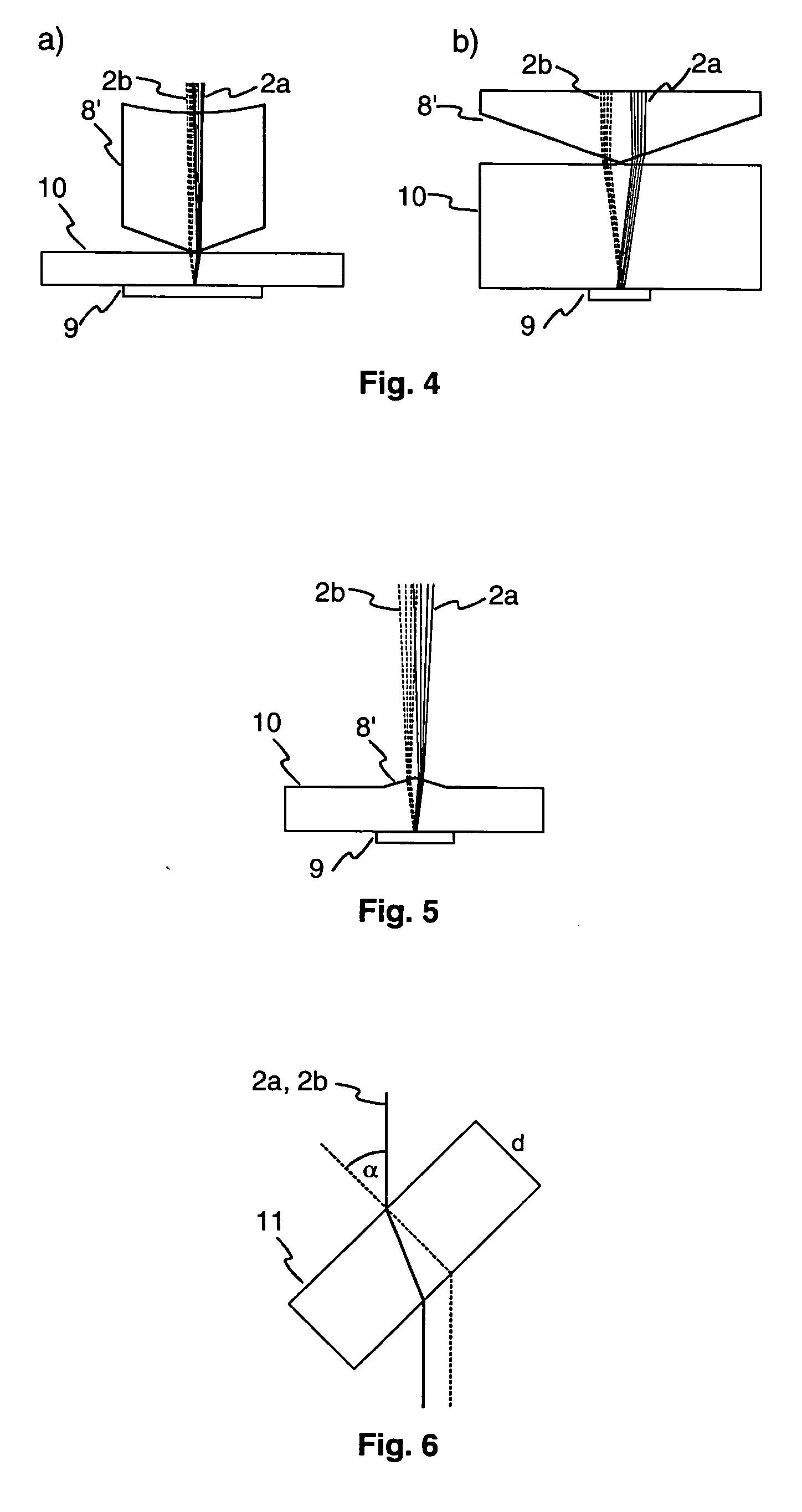Optical scanner with micro-optics for beam combination
a technology of optical scanner and beam combination, applied in the field of optical scanner, can solve the problems of high adjustment cost, difficult production of gratings, high adjustment cost, etc., and achieve the effect of better adjustment of light beams
- Summary
- Abstract
- Description
- Claims
- Application Information
AI Technical Summary
Benefits of technology
Problems solved by technology
Method used
Image
Examples
Embodiment Construction
[0026] An optical scanner having a micro-optical element 8 for beam combination is illustrated diagrammatically in FIG. 1. A twin laser diode 1 emits a first light beam 2a and a second light beam 2b. The light beams 2a, 2b are deflected via a half-mirror 4 in the direction of an optical recording medium 6 and collimated with the aid of a collimator lens 3. By means of a movable objective lens 5, the light beams 2a, 2b are focused onto a data track situated on the optical recording medium 6. The objective lens 5 can be moved by an actuator (not shown) in the direction of the optical recording medium 6 and also perpendicularly to the data track in order to keep the focus of the light beams 2a, 2b exactly on the track. The reflected light beams 2a, 2b, which are modulated in accordance with the data stored in the track, are collimated by the objective lens 5 and focused onto a photodetector 9 by the collimator lens 3, passing through the half-mirror 4 in the process. The photodetector ...
PUM
 Login to View More
Login to View More Abstract
Description
Claims
Application Information
 Login to View More
Login to View More - R&D
- Intellectual Property
- Life Sciences
- Materials
- Tech Scout
- Unparalleled Data Quality
- Higher Quality Content
- 60% Fewer Hallucinations
Browse by: Latest US Patents, China's latest patents, Technical Efficacy Thesaurus, Application Domain, Technology Topic, Popular Technical Reports.
© 2025 PatSnap. All rights reserved.Legal|Privacy policy|Modern Slavery Act Transparency Statement|Sitemap|About US| Contact US: help@patsnap.com



